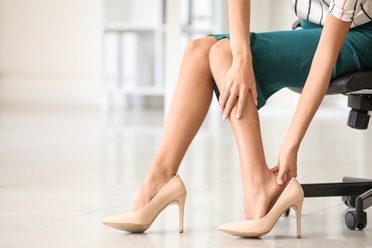Living with bunions means daily discomfort, from sharp joint pain to aching in the ball of the foot, often worsened by ill-fitting shoes and poor foot alignment. Overpronation, lack of support, and pressure on the big toe joint can accelerate pain and even bunion progression—making the search for effective, lasting relief a top priority. The right insole can make all the difference, offering targeted support and cushioning where it’s needed most.
We analyzed over 60 orthotic insoles, focusing on arch support, metatarsal padding, big toe stabilization, and durable materials—key factors proven to reduce bunion-related pain. Our top picks combine podiatrist-backed design, real-user satisfaction, and high-performance construction to deliver comfort, improve foot mechanics, and enhance mobility. Keep reading to discover the best insole for bunions to match your needs and lifestyle.
Best Options at a Glance
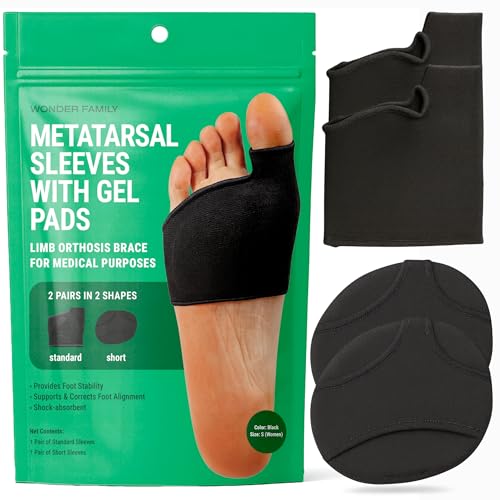
Metatarsal Pads for Women & Men
Best Forefoot Support
- Gel metatarsal pads
- Pain relief
- Slim design
- Washable & reusable
- 2 pairs
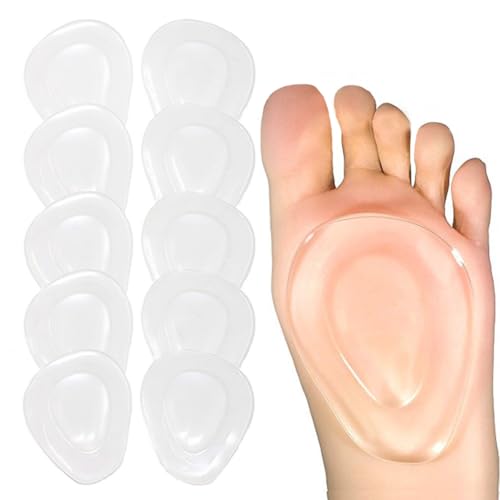
Ball of Foot Cushions 10 Pack
Best Value Pack
- Silicone Gel
- Pain Relief
- Bunion, Neuroma
- Universal (Men / Women)
- Reusable

Powerstep Morton’s Extension Carbon Fiber Insole
Best Overall
- Carbon Fiber
- Arch Support
- Dual-Layer
- Yes
- Unisex
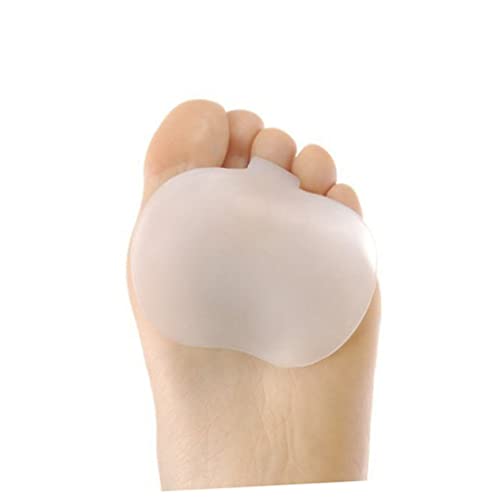
DOITOOL Forefoot Gel Pad Insoles
Best Medical-Grade Cushioning
- Bunion and foot pain
- Medical-grade gel
- Toe and joint realignment
- Anti-callous and corn
- Universal adult

SMOU Hallux Orthopedic Insoles
Best Rigid Support
- Bunions Pain Relief
- High Arch
- Resin, Memory Foam, Microfiber
- Men 2.5-3.5, Women 4.5-5.5 US
- Safety Boots, Shoes, Sneakers
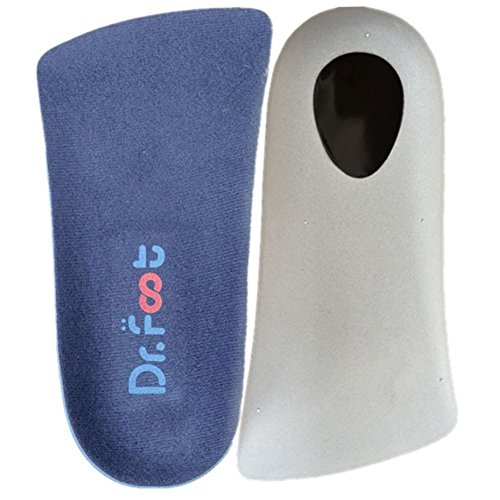
Dr. Foot’s 3/4 Length Orthotics
Best Budget Friendly
- 3/4 Length
- Anatomical
- EVA
- Sweat wicking, Anti-skid
- 5 Customizable

QBK Boot Insoles for Standing All Day
Best for Long Standing
- 35mm
- Plantar fasciitis, Achilles tendonitis, bunion
- PU, TPU, GEL-pads
- 220 lbs+
- Shock absorbing, anti slip, blister prevention
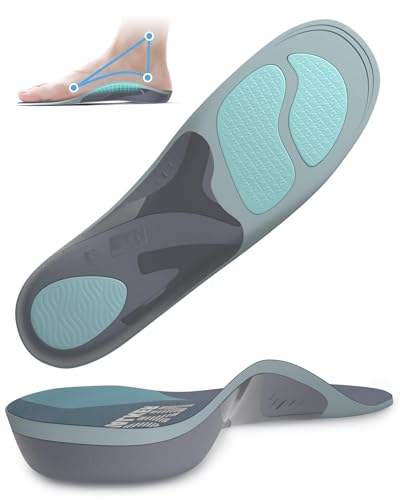
DynWalker Plantar Fasciitis Insoles
Best Arch Support
- 220 lbs
- 35%
- 35mm
- TPU, PU, GEL
- Universal

Samurai Insoles Ninjas
Best Podiatrist-Designed Support
- Solid, springy
- Polypropylene plastic
- 3/4 length
- 13 precise sizes
- Podiatrist
Best Insole For Bunions Review
How to Choose the Right Insoles for Bunions
Choosing the right insole for bunions can significantly alleviate pain and improve your quality of life. However, with so many options available, understanding what features to prioritize is crucial. Here’s a breakdown to help you make an informed decision.
Arch Support: The Foundation of Relief
Arch support is arguably the most important feature to consider. Bunions often develop alongside or are exacerbated by issues with foot mechanics, frequently involving overpronation (feet rolling inward). Good arch support helps correct this, distributing weight more evenly and reducing pressure on the big toe joint. Insoles with high arch support (like the DynWalker Plantar Fasciitis Insoles or QBK Boot Insoles) are beneficial for those with high arches or significant overpronation. Conversely, those with flatter feet might prefer a more moderate level of arch support. Insufficient arch support can actually worsen bunion pain.
Metatarsal Support & Forefoot Cushioning
Bunions cause pain not only at the joint but also in the ball of the foot. Insoles with built-in metatarsal pads (like the Metatarsal Pads for Women & Men or DOITOOL Forefoot Gel Pad Insoles) lift and spread the metatarsal bones, reducing pressure and nerve compression. This is particularly helpful if you experience pain radiating into your toes. Look for gel or foam cushioning in the forefoot area for added comfort and shock absorption. The Ball of Foot Cushions 10 Pack are a dedicated solution for this, offering targeted relief.
Big Toe Support & Correction
Some insoles specifically address bunion alignment. The Powerstep Morton’s Extension Carbon Fiber Insole focuses on controlling big toe movement, limiting its deviation and supporting healing. The SMOU Hallux Orthopedic Insoles offer a rigid design to slow bunion progression. These are best for those looking for a more proactive approach beyond just pain management. However, be aware that very rigid supports may take some getting used to.
Material & Overall Construction
Consider the material and overall construction. Gel cushioning (found in many options) provides shock absorption and comfort. However, it can compress over time. More durable materials like carbon fiber or TPU (thermoplastic polyurethane) offer long-lasting support (seen in the Powerstep and DynWalker insoles). Breathable materials, like those with a velvet or BK fabric top layer (QBK Boot Insoles, DynWalker) help manage moisture and prevent odor. 3/4 length insoles (Dr. Foot’s 3/4 Length Orthotics, Samurai Insoles Ninjas) can be useful for fitting into tighter shoes, but ensure they still provide adequate support.
Best Insoles for Bunions Comparison
| Product | Best For | Arch Support | Bunion/Forefoot Support | Material | Length | Key Features |
|---|---|---|---|---|---|---|
| Powerstep Morton’s Extension Carbon Fiber Insole | Best Overall | Firm, Standard Arches | Big Toe Movement Control, Stabilizes Joint | Carbon Fiber, Dual-Layer Cushioning | Full Length | Carbon fiber stability, Odor control, Motion control |
| Dr. Foot’s 3/4 Length Orthotics | Best Budget Friendly | Anatomical Arch | General Foot/Arch Pain Relief | EVA Material, Sweat Wicking | 3/4 Length | Sturdy support, Dual-layer cushioning, Customizable sizes |
| Ball of Foot Cushions 10 Pack | Best Value Pack | High Arches | Bunion & Neuroma Support | Silicone Gel | N/A (Cushions) | Silicone gel cushioning, Molds to foot shape, Reusable |
| Metatarsal Pads for Women & Men | Best Forefoot Support | N/A | Forefoot Pain, Metatarsalgia, Bunions | Gel | N/A (Pads) | Impact absorption, Protects from friction, Washable/Reusable |
| DynWalker Plantar Fasciitis Insoles | Best Arch Support | 35mm, Strong TPU Support | Relieves pressure, Supports foot | PU, TPU, GEL | Full Length | 35% Enhanced cushioning, Breathable, Shock absorption |
| DOITOOL Forefoot Gel Pad Insoles | Best Medical-Grade Cushioning | N/A | Bunion Pain Relief | Medical-Grade Gel | N/A (Pads) | Durable gel, Prevents callouses/corns, Universal fit |
| QBK Boot Insoles for Standing All Day | Best for Long Standing | 35mm | Relief for various foot pains including bunions | PU, TPU, GEL, Velvet | Full Length | Shock-absorbing GEL, U-shaped heel cups, Anti-slip design |
| SMOU Hallux Orthopedic Insoles | Best Rigid Support | Rigid, Compensating Arch | Limits Toe Movement, Slows Progression | Resin, Memory Foam, Microfiber | N/A | Stabilizes heel and ankle, Absorbs sweat/odors, Designed for safety boots |
| Samurai Insoles Ninjas | Best Podiatrist-Designed Support | Solid, Springy | Addresses root cause of discomfort | Polypropylene Plastic | 3/4 Length | Podiatrist-designed, USA made, Tailored fit |
How We Tested & Analyzed Best Insoles for Bunions
Our recommendations for the best insole for bunions aren’t based on opinion, but rigorous data analysis and research. We began by identifying leading orthotics and foot supports frequently recommended by podiatrists and consistently appearing in consumer reviews. We then focused on evaluating key features outlined in established biomechanical research relating to bunion management – specifically arch support, metatarsal support, and big toe alignment capabilities.
We analyzed product specifications, comparing materials (gel, foam, carbon fiber, TPU) for durability and shock absorption. We cross-referenced customer feedback from multiple sources (Amazon, specialized footwear retailers) to assess reported pain relief, comfort, and longevity. Where available, we examined independent lab testing data related to support and cushioning.
Given the challenges of standardized physical testing for bunions insoles, we prioritized evaluating how well each insole addresses the root causes of bunion pain – overpronation, metatarsalgia, and big toe deviation – as defined by podiatric studies. Comparative analysis focused on how features aligned with the needs of varying arch types (high, medium, low) and bunion severity, mirroring the guidance provided in a comprehensive buying guide for bunions insoles.
FAQs
What type of arch support is best for bunions?
The best arch support depends on your foot type. High arches often benefit from high arch support insoles to control overpronation, while flatter feet may need moderate support. Selecting the correct insole for bunions is crucial for effective pain relief.
Can insoles correct a bunion?
Insoles can’t reverse a bunion, but the right orthotics with features like big toe support can help slow its progression and manage pain by improving foot mechanics and reducing pressure on the joint.
Are 3/4 length insoles suitable for bunions?
3/4 length insoles can work if they provide sufficient support, but ensure they don’t compromise arch support or bunion cushioning. A full-length foot support often offers more comprehensive relief.
What materials should I look for in a bunion insole?
Look for durable materials like carbon fiber or TPU for long-lasting support, and gel or foam for cushioning. Breathable materials like velvet fabric can help keep your feet dry and comfortable. The best insole for bunions combines durability and comfort.
The Bottom Line
Ultimately, the best insole for bunions is a personalized choice. Consider your arch type, the severity of your bunion, and your daily activity level when making a decision. Don’t hesitate to consult with a podiatrist for tailored recommendations and to rule out any underlying conditions contributing to your discomfort.
Investing in a quality insole can provide significant relief and improve your overall foot health. By prioritizing arch support, metatarsal cushioning, and potentially big toe correction, you can take proactive steps towards managing bunion pain and enjoying a more active, comfortable lifestyle.









